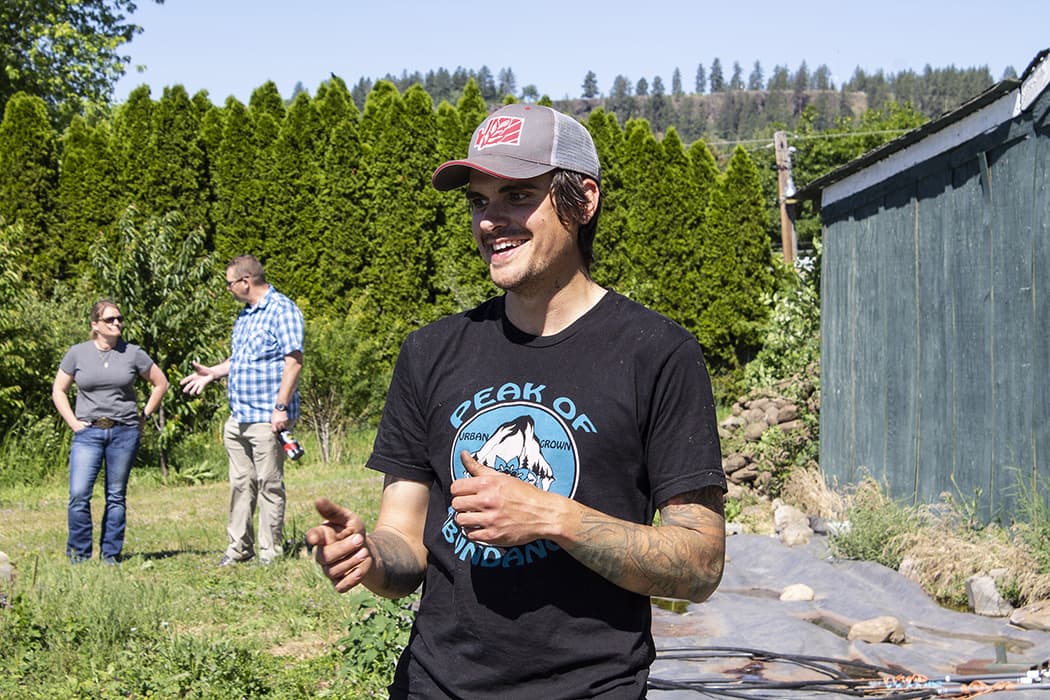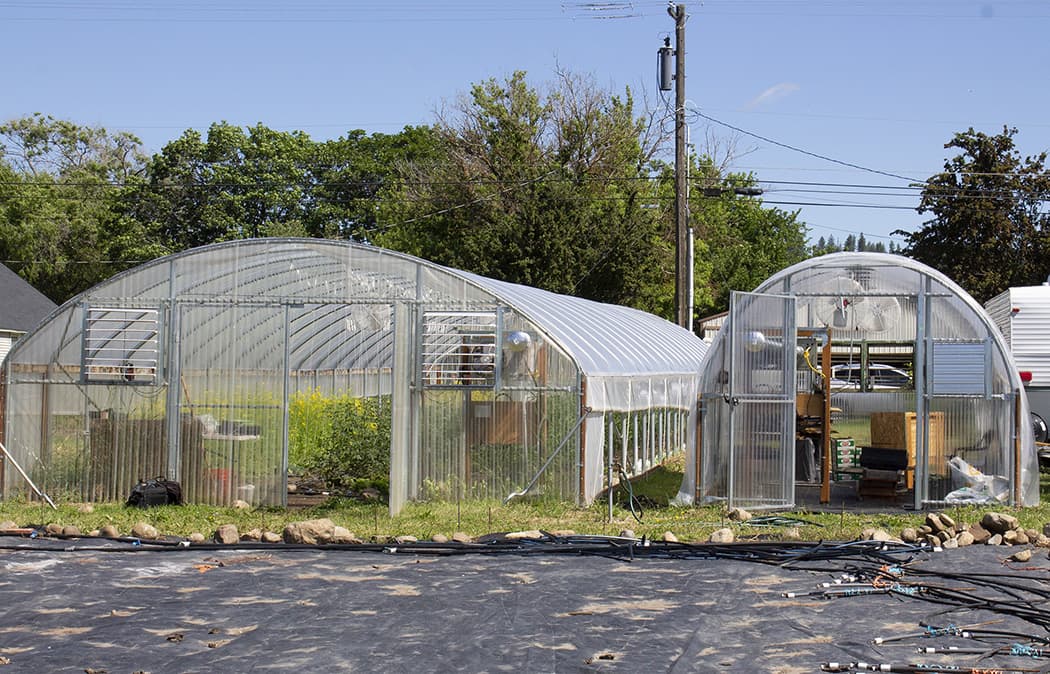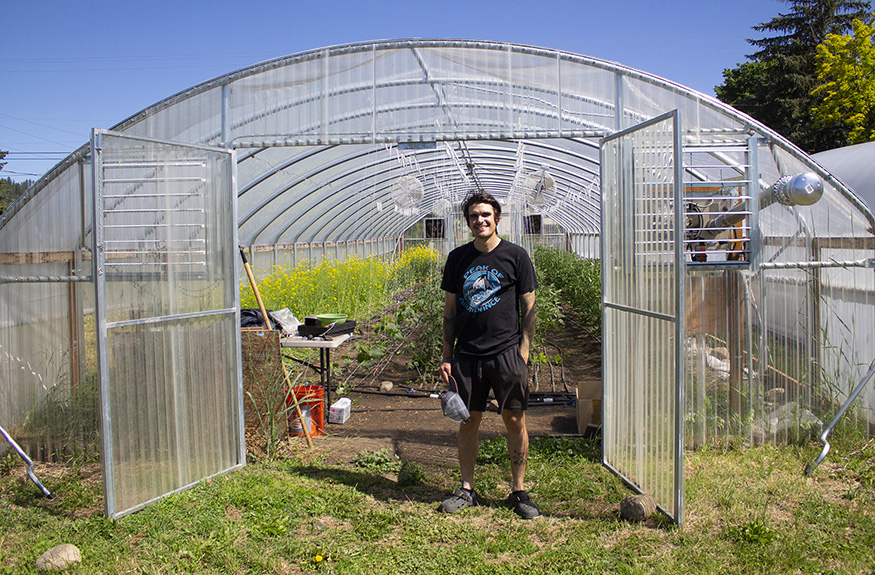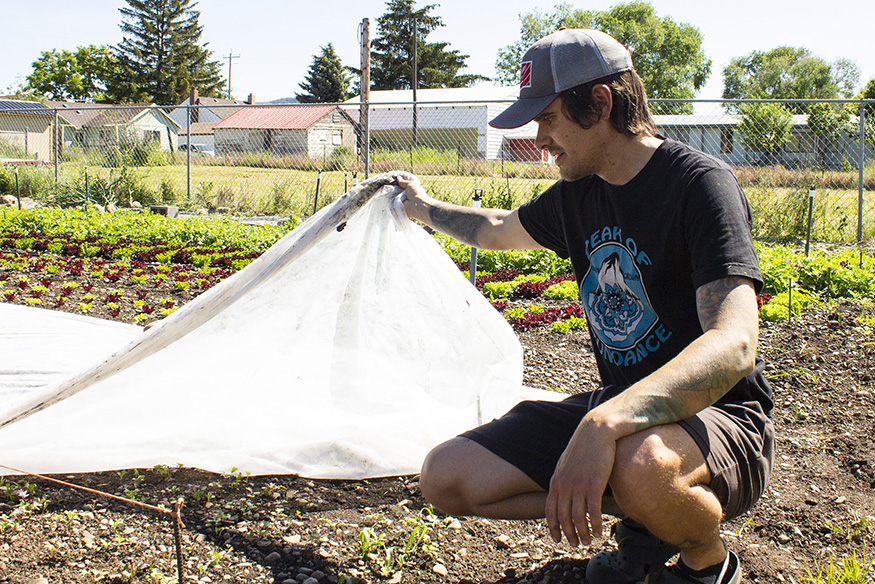This Friday meet Brandon Gerard of Peak of Abundance Farms in Spokane Valley, Washington. Brandon grows a variety of vegetables and herbs on a half-acre of suburban property he bought in 2016.

“I had been slowly funding it myself and working multiple jobs to find the infrastructure and get everything built,” he said. “I’m still working jobs in the winter, but eventually I would like to transition towards full time.” This goal is something USDA’s Natural Resources Conservation Service is helping Brandon achieve.
Building Efficiency
Brandon reached out to NRCS Soil Conservationist Tiffani Walker and applied for assistance through the Environmental Quality Incentive Program in hopes of making his operation more environmentally efficient. With the program, Brandon was able to build a high tunnel in 2017, and later added microirrigation in 2019 through a second contract.
These practices have helped Brandon protect his crops from high winds and temperatures, while also helping him water his crops.
“It's not uncommon to get 60 mile an hour winds, and then the weather is so unpredictable as well,” Brandon said. He’s also added shutters and heaters to the high tunnel to help regulate temperature fluctuations.

With high tunnel systems, farmers like Brandon can extend their growing seasons to provide healthy food to the local community throughout the year. He works with the Local Inland Northwest Cooperative to get his produce out where it’s needed locally.
“I think really what it boils down to is just access and trying to preserve local foods in a way that's accessible to people,” said Brandon.
Healthy Soil, Healthy Land
While the high tunnel has extended his growing season, the real benefit is the improvement to soil health on his land. Brandon said the prior owner of the land used the lot to store recreation equipment and had a dirt ramp for off-road vehicles. Improving and reviving the land is an ongoing effort.
“Brandon is a great example of how the job of NRCS is to assist all producers, large and small, who need assistance in creating a more sustainable operation through proven conservation practices,” said Tiffani. She hopes more operations like Brandon’s take advantage of NRCS programs through urban agricultural initiatives.

USDA is committed to working with farms of all sizes and in all locations, including those in urban areas. Agencies across USDA, including the Office of Urban Agriculture and Innovative Production, have programs and resources available. USDA can provide resources to urban farmers to help start, expand, and operate their farm or garden, market what they grow, and help with disaster recovery.
“Everybody I've worked with at NRCS has been extremely helpful, this has really been a game changer for me,” said Brandon. “Don't be afraid to call NRCS and strike up a conversation. They have some good advice and can give you some great information.”

More Information
Visit local farms, ranches, forests, and resource areas through our Fridays on the Farm stories. Meet farmers, producers and landowners who are working to improve their operations with USDA programs.
USDA’s programs for urban producers help build infrastructure for urban agriculture. USDA’s Office of Urban Agriculture and Innovative Production provides grants and cooperative agreements to nonprofits, local governments, and other entities, as well as sets up Farm Service Agency urban county committees to increase producer input in delivering programs. Learn more at farmers.gov/urban.
USDA offers a variety of risk management, disaster assistance, loan, and conservation programs to help producers weather ups and downs in the market and recover from natural disasters as well as invest in improvements to their operations. Learn about additional programs.
For more information about USDA programs and services, contact your local USDA service center.
Adrian Melendez is a public affairs specialist for NRCS in Washington.


